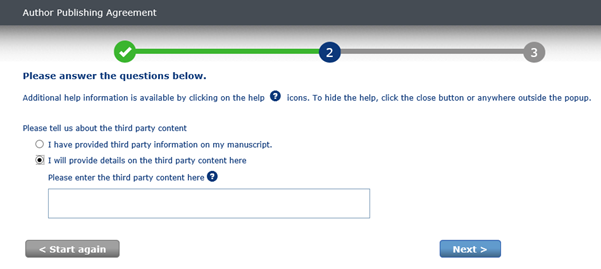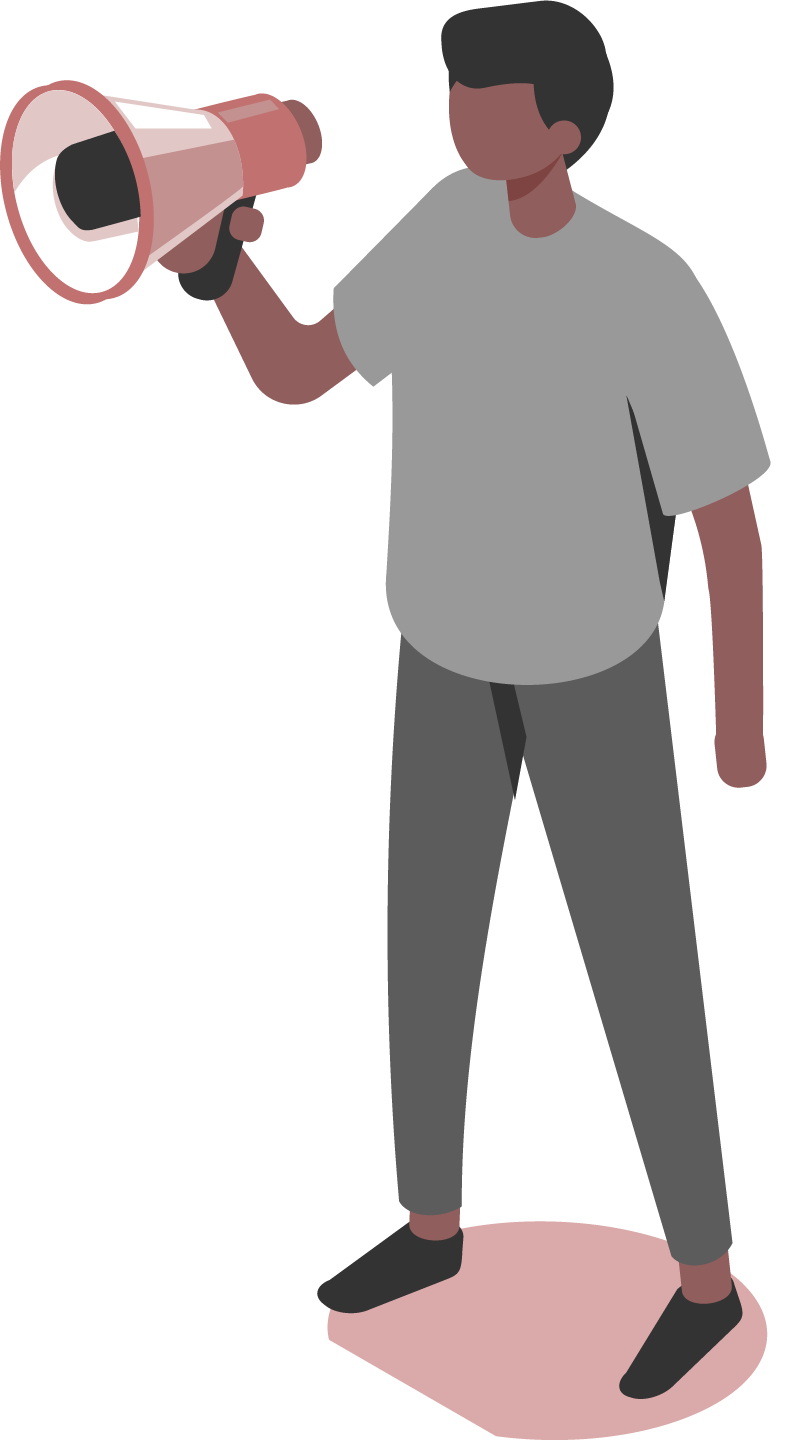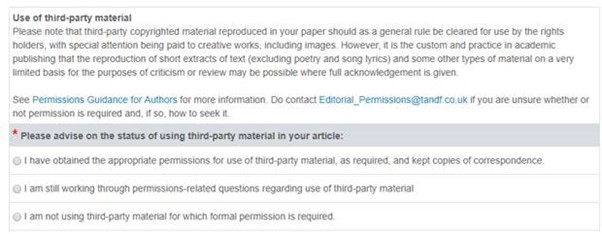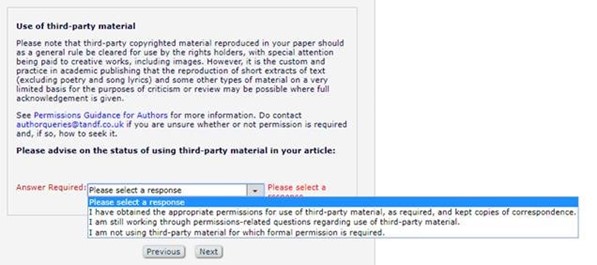| Type | Explanation |
|---|---|
| Reproduction | When a figure, section or piece of a table is published in the same form as its original publication. To reproduce a figure, section or table, permission must be obtained; you should check who owns the rights for the original content and clear permission. |
| Adaptation | When a figure has been modified by adding or taking away information. This also requires that permission is obtained. However, if an author has taken some data or information from a table in an original work and then used that data in conjunction with their own in a new table this may be allowed under Fair Use – but each determination must be made by T&F, considering the context of the adaption. Where T&F does allow use of an adaption without permission of the original rightsholder, please ensure the original work is properly cited. Furthermore, it is an expected academic courtesy that the original rightsholder is notified of your adaptation. |
| Redrawing | Redrawn figures of copyrighted illustrative material fall within the scope of “derivative copyright”. Authors should check who owns the rights for the original figure, and request permission to reuse the material. Authors may need to submit their own redrawn figure so that the rightsholder can confirm its accuracy. |
Key considerations for using third party content in your article
It’s common practice for third party content (in part or in whole) to be used in research articles. But, certain conditions must be carefully followed to make sure the use of the third party content is legal.
Use this guidance to fully understand what you must consider before using third party content in your research article.
What is third party content?
Throughout this page we use the term third party content. This refers to any content that belongs (whether by copyright or implicit ownership) to someone or something other than yourself.
This may include your own previous work, the work of your co-author/s, the work of another/third party, or data sources.
If you plan to use any third party content in your research, you must fully understand the potential copyright considerations and conditions for reuse. You must comply with these before you consider submitting any work that contains third party content.

Jump to
Examples of third party content
In this section we have some examples of various content with different copyright status. Take a look at each example and see what permissions you must gain before you can use the content in your own work.
Reuse requirements for different types of content
Below we have outlined the different types of content and guidance on reuse conditions. These are general guidelines and should not be interpreted as legal advice. We recommend that you always check with the copyright owner of the content for any specific reuse conditions, and we may ask for evidence of this on submission. In the event of any dispute over third party content, we will rely on you providing evidence of your right to use the content.
Both
Specific guidance
Adaptation, also known as a derivative work, is alteration of a work from its original form, typically by adding or subtracting an element, but where the original form (the underlying work) is recognisable. This is different than a redrawn work, where only the original idea, but not the form, is recognisable If the material you wish to adapt is not copyrighted, permission from the creator is required. It the material is copyrighted, follow the CC guidelines. CC licenses that include “ND” indicate “no derivatives,” such that the work cannot be adapted, altered, or otherwise modified in any way.
Permission
Specific guidance
Algorithms are not copyright protected. Copyright law does not cover ideas, processes, methods, or systems; rather, it is the description or tangible expression of these ideas or systems that is copyrighted. If you want to use an algorithm created by another person, request written permission and attribute the creator in your work.
Further information
Copyright
Specific guidance
Graffiti/street art is copyright protected by the artist, even if the artwork doesn’t include a copyright license, and even if it was created unlawfully. Make every attempt to identify and contact the original artist to obtain permission to use their copyrighted material. This may involve contacting the owner of the “tagged” property or the local police department. Document the steps you have taken to support your efforts in the event the artist cannot be contacted.
Further information
Copyright
Specific guidance
The rights can be retained by the artist; even if the artist has been dead for longer than the out of copyright rule. You should ask the museum for the copyright status in every case.
Further information
Copyright
Specific guidance
Artwork in a repository the artist can retain rights, or can transfer the rights to the respository. Sometimes repository owners will also charge a fee to use the artwork.
Copyright
Specific guidance
A book author or their publisher will hold the copyright to a book. If you wish to reuse more than a few sentences for scholarly commentary or critcism, you should contact the copyright owner or rightsholder to obtain permission.
Copyright
Specific guidance
You automatically hold the copyright to your book, unless you choose to transfer it to your publisher.
Copyright
Specific guidance
The use of all Microsoft copyrighted content is subject to permission being given by Microsoft. Commercial reuse (for example, in an academic journal) may be prohibited.
Further information
Copyright
Specific guidance
Computer programs are considered literary works and are covered under US copyright law.
Further information
Copyright
Specific guidance
In order for a dance to be copyrighted, it must be original and fixed in a tangible form, like a video recording.
Further information
Both
Specific guidance
Data sets that are entirely factual (e.g. a census report) are not copyrighted. However, you should seek explicit permission from the creator prior to use. Data sets that contain a facet of creativity may be copyrighted.
Copyright
Specific guidance
Dramatic works are copyright protected in the fixed, tangible form in which they are recorded or documented.
Further information
Neither
Specific guidance
Embargos apply if the author is posting the Accepted Manuscript to an institutional or subject repository. Taylor & Francis mandates public access to the final version of an author manuscript twelve (12) months after the publication of the Version of Scholarly Record in science, engineering, behavioural science, and medicine; and eighteen (18) months after first publication for arts, social science, and humanities journals, in digital or print form.
Further information
Copyright
Specific guidance
Whether a screenshot involves copyright depends on what is captured within the screenshot. If copyrighted work is within the screenshot, for example, an original drawing, the screenshot is also subject to terms of that drawing’s copyright license. A screenshot could be considered a form of reproduction or a derivative work, both of which are subject to copyright terms.
Copyright
Specific guidance
It is acceptable and commonplace to repost/share Facebook posts (text only) within the same platform or in an embedded format. If you want to include a Facebook post (text only) in your manuscript, you should request permission from the original author. Not all text that users share on Facebook is copyrightable – for example, generic comments like “I support human rights,” is unlikely to be upheld as copyrighted in courts. But even if a post is not copyrightable, you should ask the user for permission before using their post in your manuscript.
Further information
Permission or Neither
Specific guidance
Film stills can be used under Fair Use as long as they are limited in use and the article discusses them directly (i.e. not used solely for illustrative purposes). However, if you are uncertain whether you are covered under Fair Use, seek permission from the Producer or copyright holder.
Further information
Copyright
Specific guidance
Use of Flickr images depends on the image and licence applied by author. Images typically include a copyright license on their page. If there is not a license, assume that the image is copyrighted by the photographer and request permission.
Further information
Neither
Specific guidance
Google Earth is covered under Fair Use, which means you can reuse and modify selections without permission.
Further information
Neither
Specific guidance
Facts and government publications are not copyrightable.
Further information
Copyright
Specific guidance
Graffiti/street art is copyright protected by the artist, even if the artwork doesn’t include a copyright license, and even if it was created unlawfully. Make every attempt to identify and contact the original artist to obtain permission to use their copy.
Copyright
Specific guidance
Original images on Instragram are copyrighted by the creator. Like other social media platforms, reposting or sharing an image within the original platform is generally within the platform’s terms of use. If you wish to share an image outside of the platform, the image is subject to copyright and you must request permission to republish copyrighted material from the original author.
Further information
Copyright
Specific guidance
Maps are copyrightable and may be considered as a work of art. This includes Google Maps. The exception to this are maps produced by the federal government, such as topographic maps produced by the U.S. Geological Survey (USGS), which are in the public domain.
Further information
Both
Specific guidance
Original maps, like original art, are copyrightable. You may decide how to copyright your map.
Permission
Specific guidance
Equations are not copyrightable, but if they are expressed in a original way, that form may be subject to copyright.
Further information
Both
Specific guidance
Stock photography are images that are sold for a fee in exchange for a license. The license type varies, but generally grant permission for the purchaser to use the image without seeking additional permission from the creator.
Permission (if able)
Specific guidance
Memes are generally fair-use and are themselves derivative (adapted) works. But you need to check if there are identifiable images of people, how/if the meme artist obtained the image, and if consent was required.
Copyright
Specific guidance
Movies are copyrighted. If you wish to use a limited number of film stills, see that section. If you wish to reproduce film script, you must request permission from the copyright holder, most likely the Producer.
Copyright
Specific guidance
Inclusion of movie lyrics or notation in your publication requires permission from the producer. There is no minimum amount of a song or notation that is exempted from copyright.
Copyright
Specific guidance
Newpaper or magazine articles are copyrighted, most often by the publisher, similar to academic journal articles.
Both
Specific guidance
Users who post text or images to a dating website almost always have an expectation of privacy; that is, they would not expect their text or images to be re-used elsewhere, especially without their permission. To use text or images from a dating website, you must obtain written permission from the content creator or host.
Further information
Copyright
Specific guidance
An orphan work is one where the creator (copyright holder) cannot be identified or contacted. The use of orphaned works is disputed, but generally is acceptable if it falls within Fair Use or Fair Dealing.
Further information
Patent and permission
Specific guidance
A patented work is an invention and is one of three types of intellectual property (patents, copyright, trademark). Aspects of a patent, such as a diagram of an invention, can be copyrighted, but the function of the machine itself is what is patented. Patents are protected and you must seek explicit permission from the patent holder prior to replicating, or documenting, aspects related to their patent.
Further information
Copyright
Specific guidance
Consider whether consent was provided by subjects whose faces are in the database.
Copyright
Specific guidance
Regardless of where a photo is located, the copyright is assigned to the photographer, unless they have explicitely transferred it to someone or something else. Some social media companies hold a license to use the photograph in certain ways, but they generally do not hold the copyright.
Both
Specific guidance
Depends on licence. If it’s an unrestricted like CC-BY then citing the source
Copyright
Specific guidance
Copyright in relation to the artwork pictured
Permission
Specific guidance
Unless you took the picture on behalf of a company, or signed over the copyright, you likely are the copyright holder. If the photo includes people who could identified, you should obtain permission from those people.
Neither
Specific guidance
Unless you took the picture on behalf of a company, or signed over the copyright, you likely are the copyright holder. You do not need permission to publish a photo you took of a public space.
Neither
Specific guidance
Unless you took the picture on behalf of a company, or signed over the copyright, you likely are the copyright holder. You do not need permission to publish a photo you took of a private space.
Copyright
Specific guidance
A podcast, or a transcript of a podcast, is copyrighted by the producer of that podcast. To republish a transcript or post a recording of the podcast, you should seek explicit permission from the producer.
Copyright
Specific guidance
Poems, like other creative works, are copyrighted by the creator, unless they transfer the copyright to a publisher. To republish a poem, you should seek permission from the copyright holder.
Copyright
Specific guidance
Questionnaires and psychometric scales, including the individual questions within them, are copyrighted. However, some questions, such as “what is your favorite color,” may fall into fair use.
Permission
Specific guidance
You must obtain permission from source of the quote in writing before publishing quotes from private conversations.
Neither
Specific guidance
Quotations of published material for the purpose of scholarly commentary or critcism is an expected and permitted aspect of scholarly publishing. Quoted material should be denoted by quotation marks and you should include a citation to the original source. This level of quotation does not require permission because it falls within “fair use.” However, if you wish to quote more than a few sentences , you should contact the copyright holder to obtain permission.
Further information
Copyright
Specific guidance
If you redraw a figure, it must be significantly different from the original – simply redrawing (tracing) the figure does not negate the original copyright status. The redrawn figure must express the idea in a novel way.
Both
Specific guidance
Permission should be sought from the rightsholder; certain journal article figures may be part of the STM Permissions guidelines exceptions.
Depends
Specific guidance
Acceptable if the changes you’ve made transformed the figure’s meaning or expression OR add value or insight. Otherwise, copyright applies.
Copyright
Specific guidance
Scholarly articles are copyrighted by the author, the publisher, or a combination of the two. If you want to republish an entire article, or large portions of it, you need to obtain permission from the copyright holder. Quoting small sections that are directly relevant to something you are writing is acceptable under Fair Use, as long as you provide an appropriate citation.
Further information
Copyright
Specific guidance
If you publish your article with a commercial publisher, you might have signed copyright over to them. Check the journal-author publishing agreement to see whether you or the publisher hold copyright. Authors typically retain copyright if the article is published open access (OA). In all cases, Taylor & Francis allows authors to freely share and dissiminate the Author’s Original Manuscript (AOM), also known as a preprint. The final Version of Record (VOR), which has been peer reviewed, is copyrighted by T&F, unless it is OA.
Further information
Both
Specific guidance
Scraped data involves both copyright and privacy/data protection law. In most cases, users retain copyright to their content and, if the content was posted privately, users may have an “expectation of privacy.” Most social media platforms state their scraping policy in their Terms of Use and require explicit permission to scrape.
Copyright
Specific guidance
While data itself cannot be copyrighted, the creative or original display of data can be copyrighted. For example, an author might display data in a table using a pleasing color and font palate. In that case, the table can be copyrighted, but the data itself is not. However, the data may be part of a private data set, in which case you would need to obtain permission regardless of how you present or format the data.
Copyright
Specific guidance
If the original article is copyrighted, you will need to obtain permission prior to republishing a translation.
Further information
Both
Specific guidance
If you use third-party material in your video, such as an existing table or figure, the same copyright rules apply as when these are reused in an article: you must obtain copyright permission from the copyright holder. If you created all of the material in your video and did not reuse anything, then you are the default copyright holder.
Further information
Copyright
Specific guidance
Scripted lectures, speeches, and addresses, as well presentations (e.g. slides or videos) are copyrightable. You must obtain permission from the copyright holder if you want to reuse any of these items, whether as a quote or in a recording of your own. The person delivering the speech generally holds copyright, but if it was given as part of an employment contract, the employer may hold the copright. Beyond copyright, you should ensure the webinar host has consented to sharing of the content outside of the webinar.
Permission
Specific guidance
WhatsApp chat users likely have an expectation of privacy, meaning they would not expect their chat to be made public. You must obtain permission from the user prior to sharing or reusing their content, regardless of whether the material is copyrightable.
Further information
Both
Specific guidance
Original content shared on WeChat, whether text or photography, is copyrighted by the creator. In addition, because content on WeChat is often shared in private messages, the content creator may have an expectation of privacy, such that you should obtain explicit written permission to share any content outside of WeChat, even if you correctly quote and cite the creator.
Further information
Both
Specific guidance
A tweet may be considered copyrighted if it is original to its author and has a modicum of originality. For example, a retweet is not copyrighted by the secondary tweeter, and a tweet that simply states a fact such as “Abraham Lincoln was an American president” is not copyrightable. Even if you doubt a tweet is copyrightable, you should still obtain permission from the author.
Further information
Neither
Specific guidance
Tweets from government officials, made an an official capacity, such as from their “official government account,” are considered to be in the public domain and therefore not copyrightable. If a government official tweets from a personal account, it may be copyrightable, in which case you would need to seek permission to reuse.
Further information
Copyright
Specific guidance
YouTube videos are copyrighted by their creators. To reuse all or part of a video, you must obtain permission from the creator.
Further information
Frequently asked questions
Click the expand + icon on the questions below to open the information.

By ticking ‘Yes’, the corresponding author will be asked to give further details. These details can either be included within the manuscript source file(s), or added in our system – see how in the screenshot below.

The acknowledgement will then be included in the author publishing agreement as the following legally binding statement (also shown the screenshot below: “The author(s) have noted that third party content is used in this article, and that written permission for its use has been obtained by the author(s).”

More resources on using third party content in your article
Understanding Fair Use fact sheet, UK Copyright Service
Copyright notice: digital images, photographs and the internet, guidance from the Intellectual Property Office
Permissions Guidelines for UK publishers, Publishers Association
Subject Matter and Scope of Copyright, Copyright.gov U.S. Copyright Office



